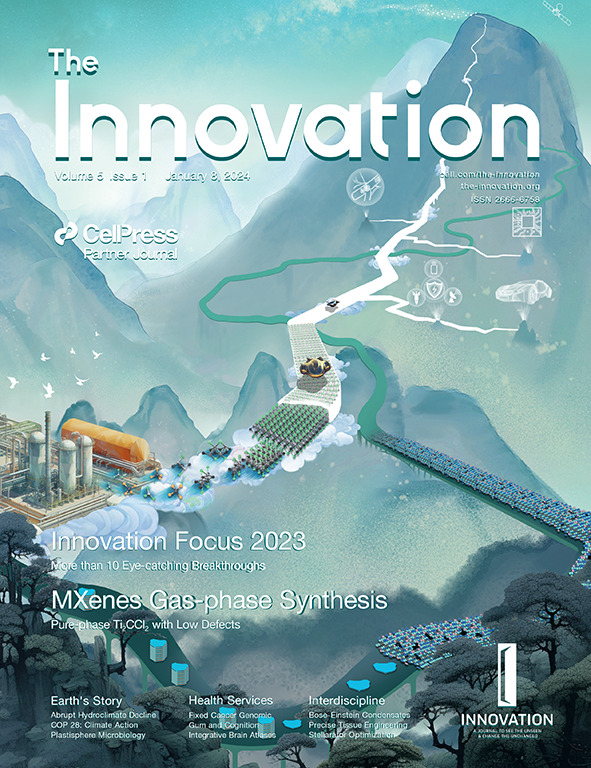6PPD-quinone 通过提取光合电子影响蓝藻的光合碳固定
IF 33.2
1区 综合性期刊
Q1 MULTIDISCIPLINARY SCIENCES
引用次数: 0
摘要
蓝藻的光合碳固定在全球碳循环中发挥着关键作用,但却受到环境污染物的威胁。迄今为止,具有电子穿梭特性的醌类化合物对蓝藻光合作用的影响尚不清楚。在此,我们首次研究了一种新出现的醌类污染物,即 6PPD-Q(N-(1,3-二甲基丁基)-N′-苯基-苯二胺-醌)在 400 代暴露期内对蓝藻 sp.大量证据(包括类囊体膜形态和光合作用反应、碳固定率和关键基因/蛋白质分析结果)有力地表明,6PPD-Q 是一种强效的光合作用干扰物。6PPD-Q 在光系统 II(PSII)的 Q 位点和 PSI 的 A 位点接受光合电子,导致蓝藻的碳固定率在短暂上升后持续下降。这项研究揭示了 6PPD-Q 干扰蓝藻光合固碳的具体机制,而光合固碳对全球碳循环非常重要。本文章由计算机程序翻译,如有差异,请以英文原文为准。
6PPD-quinone affects the photosynthetic carbon fixation in cyanobacteria by extracting photosynthetic electrons
Photosynthetic carbon fixation by cyanobacteria plays a pivotal role in the global carbon cycle but is threatened by environmental pollutants. To date, the impact of quinones, with electron shuttling properties, on cyanobacterial photosynthesis is unknown. Here, we present the first study investigating the effects of an emerging quinone pollutant, i.e., 6PPD-Q (N-(1,3-dimethylbutyl)-N′-phenyl--phenylenediamine-quinone), on the cyanobacterium sp. over a 400-generation exposure period. sp. exhibited distinct sequential phases, including hormesis, toxicity, and eventual recovery, throughout this exposure. Extensive evidence, including results of thylakoid membrane morphological and photosynthetic responses, carbon fixation rate, and key gene/protein analyses, strongly indicates that 6PPD-Q is a potent disruptor of photosynthesis. 6PPD-Q accepts photosynthetic electrons at the Q site in photosystem II (PSII) and the A site in PSI, leading to a sustained decrease in the carbon fixation of cyanobacteria after an ephemeral increase. This work revealed the specific mechanism by which 6PPD-Q interferes with photosynthetic carbon fixation in cyanobacteria, which is highly important for the global carbon cycle.
求助全文
通过发布文献求助,成功后即可免费获取论文全文。
去求助
来源期刊

The Innovation
MULTIDISCIPLINARY SCIENCES-
CiteScore
38.30
自引率
1.20%
发文量
134
审稿时长
6 weeks
期刊介绍:
The Innovation is an interdisciplinary journal that aims to promote scientific application. It publishes cutting-edge research and high-quality reviews in various scientific disciplines, including physics, chemistry, materials, nanotechnology, biology, translational medicine, geoscience, and engineering. The journal adheres to the peer review and publishing standards of Cell Press journals.
The Innovation is committed to serving scientists and the public. It aims to publish significant advances promptly and provides a transparent exchange platform. The journal also strives to efficiently promote the translation from scientific discovery to technological achievements and rapidly disseminate scientific findings worldwide.
Indexed in the following databases, The Innovation has visibility in Scopus, Directory of Open Access Journals (DOAJ), Web of Science, Emerging Sources Citation Index (ESCI), PubMed Central, Compendex (previously Ei index), INSPEC, and CABI A&I.
 求助内容:
求助内容: 应助结果提醒方式:
应助结果提醒方式:


